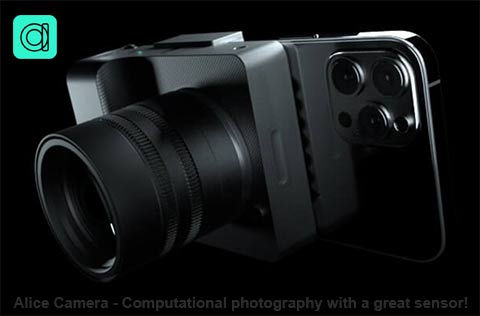Today Google unveiled the heavily leaked Pixel 4 and Pixel 4 XL phones which have the latest and greatest camera module geared up for computational photography enthusiasts. It brings in the dual camera back design of many competitors and also drops the notch in turn for a thicker bezel which looks in our view better. The phone is sporting the latest Snapdragon 855, 6GB of RAM and up to 128GB of fast flash memory.
Sadly the phone is keeping the exact same high frame rate specs of the Pixel 3 of last year. So 240fps is staying at 720p and 120fps at 1080p is the max at that resolution. It is clear Google is not interested in delivering performance in high frame rates like their rivals in the Android space. Even Apple offers a much better 1080p 240fps spec which is offered on the back cameras with little trouble. Even the iPhone 11 bests the Pixel 4 in the Selfie department as it allows up to 120fps 1080p for (Slofies™) which is a prominent feature of the handset.
Google Pixel 4 Slow Motion Specs:
- 1080p @ 30 FPS, 60 FPS, 120 FPS
- 720p @ 240 FPS
- 4K @ 30 FPS
- 1080p @ 30 FPS
https://www.youtube.com/watch?v=0gizLT97cKo
Rear Camera Specs:
- Camera 1
- 16 MP
- 1.0 μm pixel width
- Autofocus with phase detection
- Optical + electronic image stabilization
- Spectral + flicker sensor
- ƒ/2.4 aperture
- 52° field of view
- Camera 2
- 12.2 MP
- 1.4 μm pixel width
- Autofocus with dual pixel phase detection
- Optical + electronic image stabilization
- ƒ/1.7 aperture
- 77° field of view
Front Camera (loses the dual camera of pixel 3):
- 8 MP
- 1.22 μm pixel width
- ƒ/2.0 aperture
- Fixed focus
- 90° field of view
- NIR flood emitter
- NIR dot projector
- 2 NIR cameras
Pricing:
- Pixel 4 is priced at $799
- Pixel 4 XL is priced at $899
- Available at all US carriers GSM and CDMA for the first time outside of Verizon!
The Pixel 4 & 4 XL have competitive camera modules when you compare other flagship phones. Google went with a dual-camera design without adding the super wide-angle one common on Samsung Galaxy and iPhones for example. With computational photography, the Pixel is very capable and probably will become one of the best cameras out there like the Pixel 3 was all of last year by generating the best reviews for still images on a phone.
As a video shooter, the phone should do well but will not beat the best out there and probably the iPhone 11 will have a clear win in the motion department with their emphasis on professional video shooting on the 11 Pro.
Slow Motion ZZZzzz?
By staying at 240fps 720p the Pixel 4 shows they are not interested in improving that spec which seems to be frozen for now 3 generations of Pixel phones. They are all about a rounded phone with impeccable still image quality and not focused on being the best at video capture. Sony with their Xperia One and others have much better video specs and of course, the slow motion crown falls now on the Huawei Mate 30 Pro with 1920fps at 720p for a 1/2 second or 960fps 1080p at 1 second. No other phone has yet to match this performance.
Google Pixel 4 event in 10 minutes by The Verge:
Google Pixel 4 camera test by Phandroid: → Continue Reading Full Post ←


